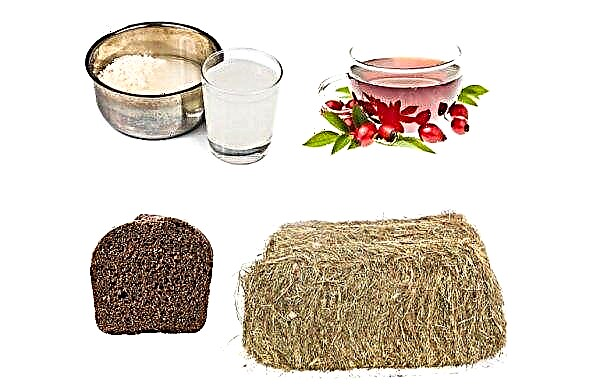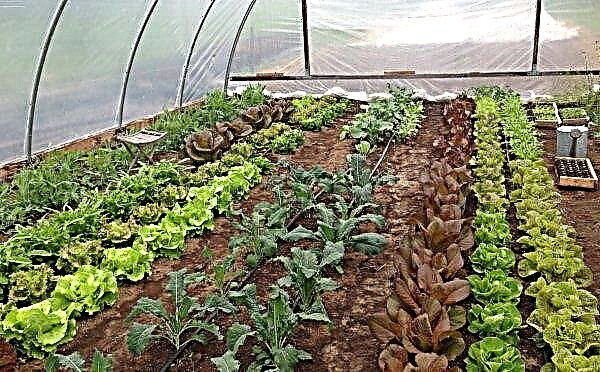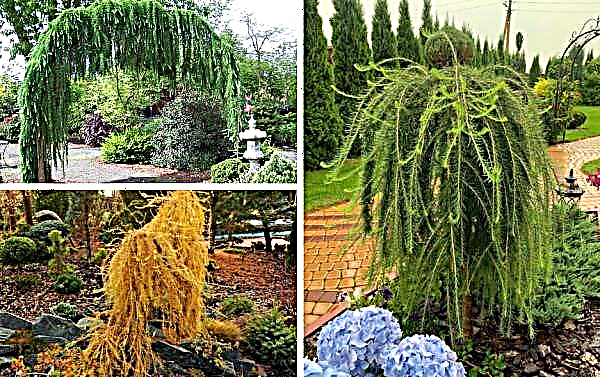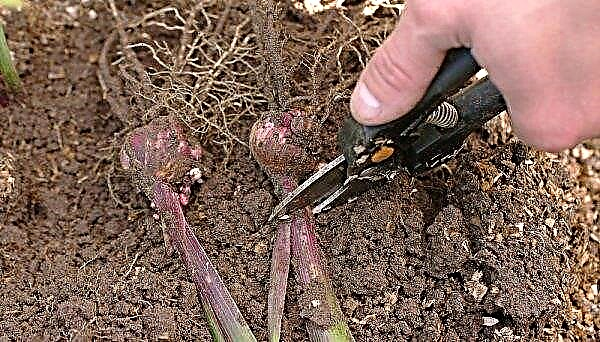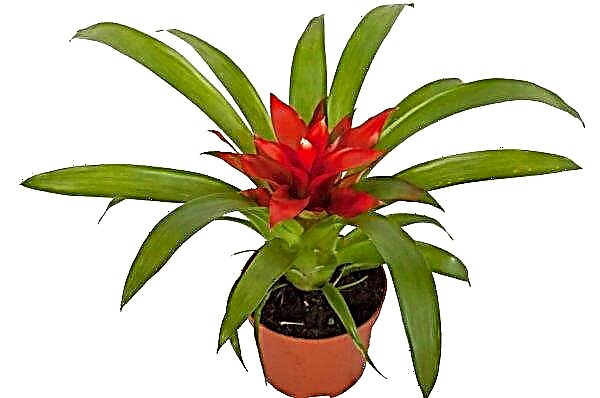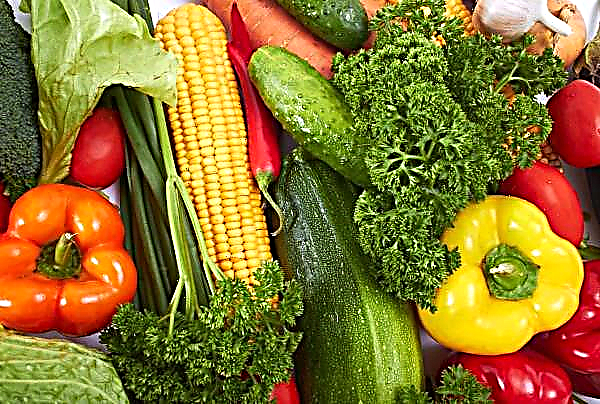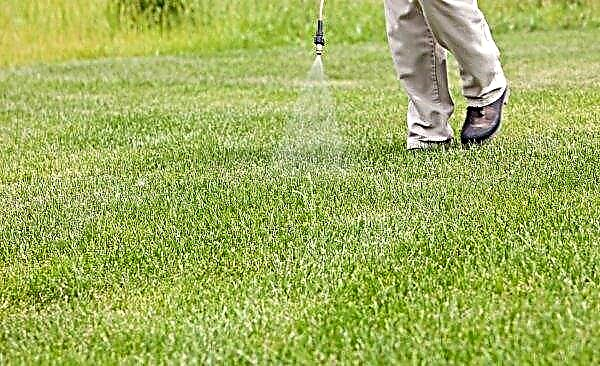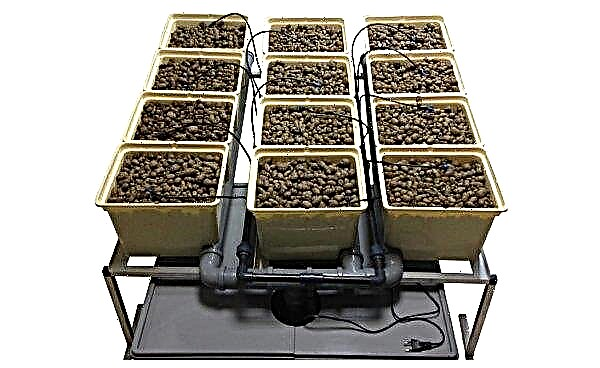Due to the wide popularity and frequent cultivation of cucumbers not only in private areas, but also in industrial greenhouses, they are often subjected to selection. A huge number of new hybrids, almost all of which have many positive characteristics, make the selection of the desired variety quite difficult. Cucumbers Buyan - a vivid representative of the fruitful work of breeders. Despite its short history of existence, this variety managed to gain wide popularity both among experienced gardeners and among beginner vegetable growers.
Characterization and description of the variety
Buyan cucumbers are a hybrid early ripe variety obtained as a result of the activities of the company Manul, engaged in selective seed production in the city of Mytishchi. At the end of the 90s, breeders O. Krylov and Borisov A.V. a new variety of cucumbers was developed, the characteristics of which allowed it to be grown both in open ground and in greenhouses. In the early 2000s, the hybrid was included in the state registry of Russia and was recommended for three regions: North-West, Volga-Vyatka and Central.
Did you know? The ancient Egyptians put cucumbers in the tombs of the pharaohs along with other valuable things.
Botanical Description
Buyan - partenocarpic variety, i.e. he has the ability to self-pollination. Seeds are weak and undeveloped. The hybrid is highly photophilous, and therefore sufficient lighting positively affects the quantity and quality of fruits. Despite its ability to endure various weather conditions, Buyan achieves the best results in mild climates.

Bush
The plant is medium-sized, has a medium-braided and medium-branched structure. Thanks to branch self-regulation, a large number of fruits located on the central stem inhibit the development of additional shoots.
It is worth noting that Buyan belongs to indeterminate varieties, which means that the growth of its central stem is not limited. The green leaves are medium in size and have a slight waviness along the edges. In each node, 2–7 Zelentsy are formed. The female type of flowering prevails.
We recommend reading about the cultivation of other parthenocarpic cucumbers:
Fruit
Cucumbers of this variety have a regular cylindrical shape and large tubercles over the entire surface. The average fruit length is about 7–12 cm, weight varies between 90–110 g. The skin is quite thin, green in color. The pulp is rich in juiciness and high palatability.
Productivity
Buyan cucumbers belong to high-yielding varieties. However, this indicator varies slightly depending on the turnover of cultivation:
- the yield of the spring-summer turnover is 12.3–14.9 kg / 1 m², and the early productivity of this period is 3.1–6.7 kg / 1 m²;
- in summer-autumn turnover - 7.4–8.2 kg / 1 m², early - 4–4.2 kg / 1 m².
 Indicators of commodity output - 99%
Indicators of commodity output - 99%
Timing of flowering and ripening
Buyan belongs to the early ripening varieties, and therefore you can get the first crop already 40–45 days after the appearance of sprouts. In this case, flowering occurs after 30 days. The first blossoms are inflorescences, which are located in the sinuses 2-3 of the lower leaf and then the process continues from bottom to top along the main stem.
Pros and cons of the variety
- Variety Buyan has many advantages, including:
- high productivity;
- early ripeness of the variety;
- high taste characteristics;
- universality of application;
- tolerance of temperature differences;
- high presentation performance;
- stable immunity to various diseases (including brown spotting, mosaic and cladosporiosis).
Cucumbers of this variety have practically no flaws, and the most significant disadvantage is its low resistance to peronosporiosis.
Sowing and agricultural cultivation
Choosing the timing of sowing seeds of cucumbers, you should decide on the method of growing this crop:
- The procedure for sowing seeds in open soil is carried out in early to mid-June.
- Sowing under temporary shelter (film) must be carried out starting from the third week of May.
- Seeds for seedlings are sown in the first half of May, 2-3 weeks before the intended planting in the ground.
Important! Most suitable for sowing are seeds 3-4 year old.
Buyan cucumbers can be grown by any of the above methods, however, the cultivation of this variety by seedling is more preferable. In addition, fruiting in this case occurs much earlier (by 7–10 days).
 Soil for sowing seeds and growing seedlings can be prepared independently (equal parts of peat, sawdust, sod land and humus are taken) or you can purchase a ready-made substrate
Soil for sowing seeds and growing seedlings can be prepared independently (equal parts of peat, sawdust, sod land and humus are taken) or you can purchase a ready-made substrate
When choosing containers for future seedlings, you need to know that there are several ways to germinate seeds:
- the use of large containers followed by picking plants - however, taking into account the fragility and sensitivity of the root system of young seedlings, this method is better not to use for beginner gardeners;
- separate small cups (these can be ordinary plastic or special peat), whose volume does not exceed 500 ml, and a height of 8–10 cm. It is obligatory to have drainage holes on the bottom of the tank, which prevent accumulation of excess moisture.
Immediately before sowing, the seeds undergo additional processing, which helps to obtain a stronger and more stable seedlings, and therefore increases the likelihood of a good crop:
- Rejection - the seeds are soaked in saline (35–40 g of salt is dissolved in 1 liter of water) for 15–20 minutes. All seeds that come to the surface are considered empty or too small for full seedlings, and therefore are removed.

- Disinfection - prepared seeds are washed under running water and soaked in a weak solution of potassium permanganate, which helps to relieve them of possible viral and fungal diseases.

- Germination - to obtain early seedlings, the seeds are placed in a small container, and on top they cover with a cloth (preferably natural) moistened with water. About 10 days, until the seeds sprout, the size of half a seed, the tissue is periodically moistened.

- Quenching - the seed material is placed in a variable temperature regime. The duration of the procedure is 2-3 days. About 6-7 hours, the seeds are at a temperature of +18 ... + 20 ° С, and the rest of the day - at a temperature of +3 ... + 6 ° С.
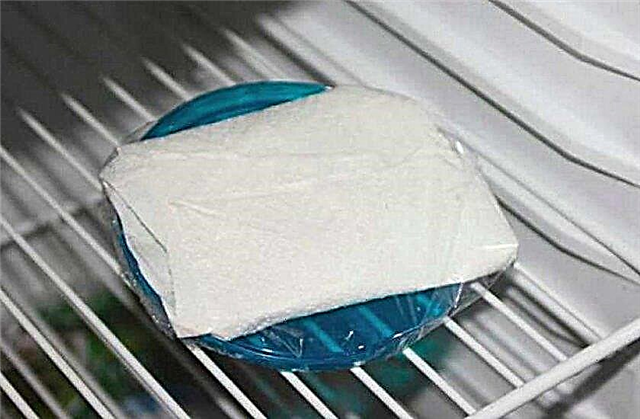
After the preparatory procedures, the seeds are ready for sowing - the substrate is poured into the cups and poured with warm water. A hole is made in the middle of each tank, 1-2 cm deep and 2-3 seeds are laid, after which they are covered with soil and carefully watered again, being careful that the water does not wash the planting material.
Further, the container with future seedlings is closed with a plastic film or glass, which is removed daily for several hours to avoid "suffocation" of the seeds, before the first sprouts appear (usually, they appear after 7-10 days).
Important! Coated seeds of cucumbers should never be soaked in solutions, and should only be sown in dry form.
After the appearance of the first shoots, the film or glass is removed. During this period, seedlings will require a large amount of natural light, watering, a frequency of 1 time per day and frequent spraying.
Also, twice during the entire period of development, the seedlings are fed, fertilizing with morning watering, under the root of the plant:
- the first feeding is carried out 12-14 days after the appearance of the first sprouts, using urea (1 teaspoon per 1 liter of water), with the calculation of 1 glass for 1 sprout;
- the second time the seedlings are fertilized when a second leaf appears on the stem - 1 teaspoon of wood ash and nitrophoska is dissolved in 3 liters of water and applied in the same doses (1 glass under 1 plant).
 Planting seedlings is carried out in the first half of June, when the air temperature warms up to +20 ... + 25 ° С, and the soil - up to + 15 ° С
Planting seedlings is carried out in the first half of June, when the air temperature warms up to +20 ... + 25 ° С, and the soil - up to + 15 ° С
Plant care
Care procedures for cucumbers planted in open ground are greatly simplified. However, there are some features that should be considered to obtain a large number of rich crops.
Watering and fertilizing
Watering cucumbers of this variety requires adhering to the "golden mean" - abundant moisture in the soil, but avoiding excessive watering, which can cause the development of a fungal infection. The optimal scheme involves the introduction of water every other day in the evening using sprinkling (using a watering can or a special irrigation system).
During the period of fruit development, the frequency of watering doubles, since a lack of water at this time provokes the formation of bitterness in the pulp of cucumbers. Water temperature for irrigation should not be lower than + 18 ° С.
Important! Deformation of the shape of cucumbers, in which the fruit resembles a light bulb, indicates a lack of calcium — it is necessary to introduce ash spraying or watering into the diet (1 liter of solution under the root of each plant).
Throughout the summer period, cucumbers require feeding, which occurs in stages:
- First feeding is carried out 14 days after planting seedlings in open ground and includes organic matter - chicken droppings solution (1:15), mullein solution (1: 6) or green infusion (1: 5), as well as mineral fertilizers - urea (1 tbsp) spoon) and superphosphate (60 g), diluted in 10 l of water, ammonium nitrate (10 g), superphosphate (10 g) and potassium salt (10 g) dissolved in 10 l of water.
- Second feeding introduced during the flowering period of plants and consists of organic matter - an infusion of green grass (1: 5) and mineral fertilizers - 1 glass of ash dissolved in 10 l of water, potassium nitrate (20 g), ammonium nitrate (30 g) and superphosphates (40 g )
- Third feeding is carried out during fruiting and consists in the introduction of organic matter (infusion of green grass) and mineral fertilizers - potassium nitrate (30 g), diluted in 10 l of water, an aqueous solution of urea (50 g per 10 l) or ash solution (1 glass per 10 l water).
- Fourth stage top dressing is carried out almost immediately after the third and its main goal is to extend the duration of fruiting and improve the quality of the crop. For these purposes, they use a two-day infused hay, as well as a soda solution (30 g per 10 liters of water) and an ash solution (1 glass per 10 liters of water).

Garter and bush formation
The process of forming bushes is one of the most important principles for growing cucumbers. However, since Buyan belongs to hybrids that produce only female flowers, the formation is no longer necessary.
Growing cucumbers, it should be noted that plants will require garter. In open ground conditions, there are several basic methods:
- Horizontal garter method - It will take 2 supports, which are located on the edges of the beds. The height of the pipes should be such that the cucumber bush, reaching the top, does not hang and does not obscure the entire plant. Between the supports several levels are stretched (at a distance of about 30 cm) of a twine or rope. As soon as the length of the stem reaches the first level, the bush is gently straightened and firmly tied.

- Vertical garter method - Two supports are also used, which are installed along the edges of the beds. A strong rope is stretched at the very top, along the entire length of which strips of fabric are tied (3 cm wide), after which they go down and the lower ends are tied around the main stem. The number of tissue strips corresponds to the number of bushes. In the future, as they grow, the plants will independently braid their support and stretch upward.

- Using Cucumber Nets - purchased in specialized stores and stretched between supports located on the edges of the beds. In the process of growth, bushes independently bind each section of the grid.

Soil care
Care procedures are needed not only by the plants themselves, but also by the soil in which they grow. It is she who is responsible for the supply of a sufficient amount of water, oxygen and nutrients to the root system of the crops grown.
The main measures for the care of the soil of the beds are:
Pest and Disease Control
Cucumbers are susceptible to various diseases, as well as the invasion of pests. Though Buyan has a stable immunity to most diseases, their main signs, as well as treatment methods and prevention, every gardener needs to know:
- Powdery mildew - characterized by damage to the foliage of the plant, and in especially neglected cases, the stem, petioles and fruits. The main signs of the disease are the appearance of white spots on the outside of the leaves. Over time, the disease covers the entire leaf, and subsequently spreads to the entire plant. The consequence of this disease is the loss of whole lashes and a decrease in the quality and quantity of the crop. In the fight against powdery mildew, infected fragments are removed and burned, and the rest of the plant is sprayed with mullein or processed with ground sulfur powder, based on 30 g per 10 m². As preventive measures, it is recommended to clean the beds from weeds, use non-cold water for irrigation, avoid waterlogging and follow the rules of crop rotation.

- Peronosporosis or downy mildew - manifests itself in the form of yellow-green spots (with a light green coating) on the upper parts of the leaves, which subsequently transform into a purple tinge on the lower parts of the leaves. The disease is characterized by rapid spread to neighboring bushes and the ability to destroy entire fields of cucumbers. The fight against the disease is to treat the plants with a milk solution (1: 9 and an additional addition of 10 drops of iodine per 10 l) or urea solution (1 g per 10 l of water). As a prophylaxis, it is necessary to use non-cold water for irrigation, to carry out mandatory seed disinfection before sowing and to exclude increased soil moisture due to excessive watering.

- White rot - characterized by the coating of white mucus of all parts of the plant: foliage, stems, inflorescences and ovaries. As a fight against this disease, soil disinfectants are used or, in the case of greenhouse conditions, the entire greenhouse. To do this, 2 g of copper sulfate and 10 g of urea are bred in a bucket of water, with the expectation that 1 liter of the drug will be required per 10 m². Prevention of the disease will be balancing moisture and avoiding thickening of the planting.

- Gourd aphids - pests that destroy both leaves and ovaries, and fruits. Attack of insects leads to damage to the crop and falling leaves. In this case, in cases of high humidity, the plant may die. To combat melon aphids, plants are sprayed with a solution of ash (200 g of ash, 50 g of planed soap are dissolved in 10 l of water) or infusion of grass (1 kg of grass is soaked for 10 days in 10 l of water). To prevent the attack of these pests, it is necessary to remove weed grass and plant debris from the beds, adhere to crop rotation rules and dig and disinfect the soil.

- Spider mite - a pest that parasitizes on foliage, eating their greens, which subsequently leads to the loss of whole beds. Of particular danger is greenhouse cultivation. A good remedy for attack by a spider mite is considered to be the treatment of crops with garlic or onion infusion (200 g of husk per 10 l of water) or planting dill next to the beds. Preventive measures include avoiding overdrying of soil in the beds, systematic cleaning and disinfection of the soil.

Harvesting and storage
The procedure for collecting cucumbers during the period of maximum fruiting is carried out in 1-2 days, but not less often, since the fruits can outgrow and prevent the formation of new greens. Suppose the collection twice a day - morning and evening. During harvesting, the fruits are cut with a knife or scissors, leaving, at the same time, a small shoot of the stem - this will help increase the duration of storage. It is also recommended that before placing the fruits in the refrigerator, leave them for a short period of time in the open air, in a shaded place.
Did you know? Cucumbers began to be used in food more than 6000 years ago.
Having a low shelf life, cucumbers are often pickled and canned. However, There are several ways to help, if necessary, extend the shelf life of cucumbers by several weeks:
- fruit storage in a plastic bag;
- a bouquet way of storage - cucumbers cut with the stem are placed in a container with a small amount of water;
- washed fruits are coated with egg white.
In general, the Buyan cucumber variety is unpretentious in maintenance, and the requirements for caring for it are minimal. Among the main advantages of the cultivars, vegetable growers are especially appreciated for their stable immunity to diseases, which makes it possible to practically not use chemicals for processing vegetables. That is why, this hybrid is often chosen as the main one in the gardens and greenhouses of both experienced gardeners and beginning gardeners.
Network user reviews
ADVANTAGES: Early hybrid with abundant fruiting
DISADVANTAGES: I did not see
Last summer, I bought the seeds of the Buyan cucumbers from the Manul agricultural firm. The result exceeded my expectations. I have not seen such a crop of cucumbers. This variety is distinguished by its early maturity and abundant fruiting. This hybrid is a female flowering type. A day later, harvested. In one node 3-5 ovaries. Fruited until autumn because they are resistant to powdery mildew and other diseases. Fruits up to 10 centimeters long. Of the five seedlings, I received so many cucumbers that my family and neighbors had enough. I used cucumbers for salting without fear. They ate these blanks all winter. This year I also bought these seeds and I will hope for a rich harvest of cucumbers.













